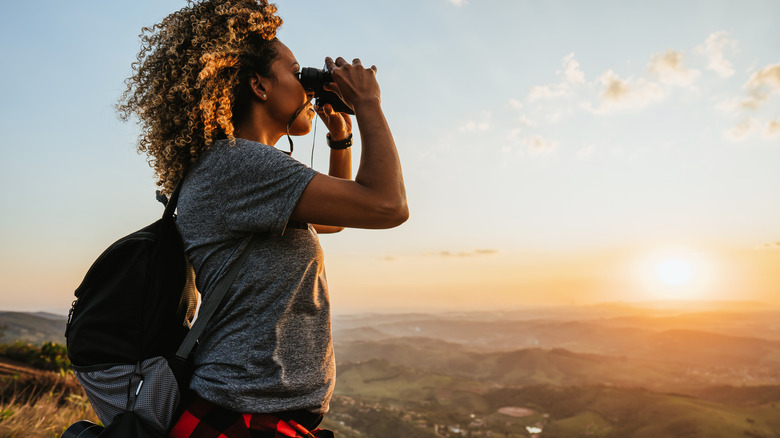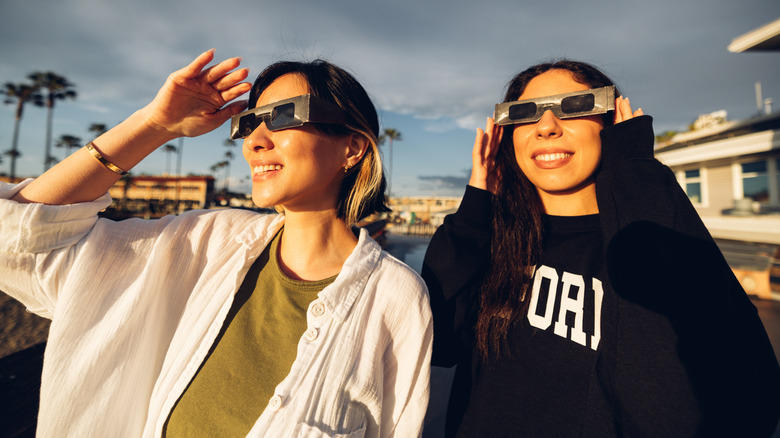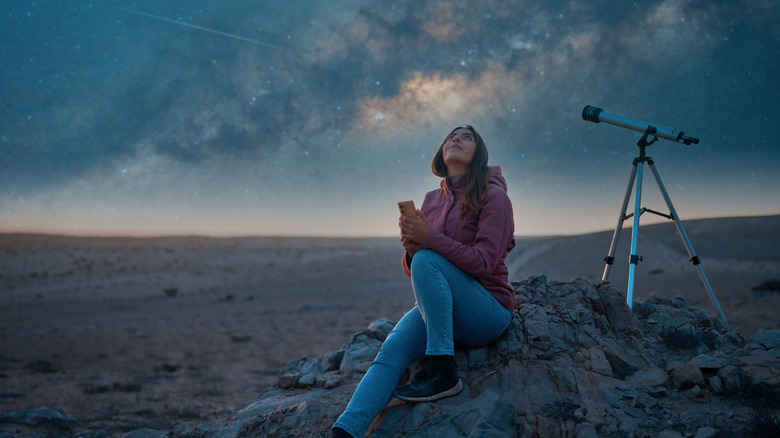One Trendy Type Of Travel Adventure You Should Really Book A Year Or More In Advance
Travel trends are constantly evolving, especially as more people are eager to try new and unique experiences that go beyond traditional sightseeing and guided tours. In recent years, the rise of specialized tourism niches that cater to specific interests and passions have skyrocketed. Sport enthusiasts travel across continents to attend major tournaments like the World Cup or the Olympics. Music lovers build entire vacations around their favorite artists (hence Taylor Swift's impact in boosting the rise of gig tourism during her record-breaking Eras Tour). Meanwhile, film and TV buffs are known for flocking to iconic filming locations from their favorite shows and movies — turning places like Dubrovnik ("Game of Thrones") and New Zealand ("Lord of the Rings") into full-blown pilgrimage sites.
That said, among these specialized travel categories, there's one particular trend that has quietly been gaining momentum: astrotourism. A growing travel niche centered around celestial events and dark sky experiences, astrotourism is all about witnessing astronomical phenomena firsthand. From chasing the northern lights to observing meteor showers, planetary alignments, and catching a glimpse of a total solar eclipse, the trend appeals to both astronomy enthusiasts and casual travelers hoping to enjoy a once-in-a-lifetime experience.
One of the most telling indicators of this trend was 2024's total solar eclipse across North America, where hordes of people planned trips to specifically position themselves within the path of totality — booking accommodations months in advance. All this points to a clear reality: planning ahead is absolutely essential if you're hoping to see any of these rare cosmic occurrences from a prime viewing location.
Planning your own astrotourism adventure
Looking ahead, two major solar eclipses are driving this planning frenzy. In 2026, a total solar eclipse will pass through parts of Spain and Iceland, prompting travel companies to create packages ranging from simple 8-day experiences to elaborate 18-day journeys that combine Portugal, Morocco, and Spain for a more comprehensive cultural experience alongside the celestial event.
Meanwhile the 2027 eclipse over North Africa is being hailed as "the event of a lifetime". This, because of its incredible six minutes of totality — the longest until 2114 — with maximum duration happening near Luxor, Egypt. Looking even further ahead, Australia and New Zealand will host their own total solar eclipse in 2028 — with packages already available starting at $6,395 for a week-long Australian experience, or more extensive 12-night options that combine both countries.
That said, if you're intrigued by the idea of planning your astrotourism adventure, you'll need to act quickly. For starters, the most desirable tour packages for the 2026 and 2027 eclipses are already filling up — with some companies reporting 75% booking rates for experiences that won't happen for several years.
Tips for making the most of your astrotourism experience
While eclipses typically represent the most time-sensitive booking requirements in astrotourism, there are plenty of other celestial experiences that could benefit from advance planning. For example, northern lights tours to destinations like Iceland, Norway, and Alaska are typically best booked at least six months ahead — especially during peak viewing seasons, which can vary per location.
When preparing for your astrotourism adventure, it's worth keeping in mind that temperatures can drop significantly at nighttime, even in warmer climates. That said, you'll want to dress in layers and pack finger-flap gloves and a hat — especially if you're going to be in desert or mountain locations where the clearest skies often come with the coldest nights. Along with this, you'll also want to bring proper gear like binoculars, a tripod, and a chair or blanket to keep you comfortable during extended viewing. Additionally, apps like SkyView or Stellarium can also help you identify celestial objects by simply pointing your phone at the sky.
Finally, always remember to practice proper dark sky etiquette when joining group experiences. Use only red flashlights — which help preserve your night vision and minimize disruption to wildlife and other observers — and avoid shining phone screens or regular flashlights. It can take up to 20 minutes for eyes to readjust to darkness after exposure to white light, which can potentially ruin the experience for yourself and others. Beyond personal behavior, consider supporting organizations like DarkSky International that promote responsible astrotourism and ensure that our collective fascination with the night sky doesn't inadvertently harm the very darkness that makes these experiences possible.


